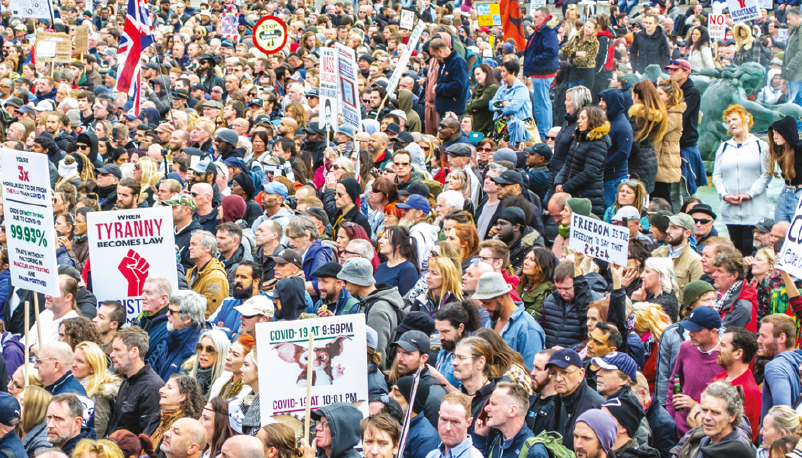The destabilising potential of disrupted supply chains and the rising cost of living due to inflation could stir civil unrest, prompting risk specialists to warn companies to review business continuity and contingency plans.
With confidence in leadership being concurrently undermined, the role of social media platforms in activating civil unrest is becoming increasingly influential, according to Allianz Global Corporate & Specialty.
“Civil unrest increasingly represents a more critical exposure for many companies than terrorism,” says Srdjan Todorovic, currently head of crisis management, UK and Nordics, at AGCS. “Incidences of social unrest are unlikely to abate any time soon, given the aftershocks of Covid-19, the cost-of-living crisis and the ideological shifts that continue to divide societies around the world. Businesses need to be alert to any suspicious indicators and designate clear pathways for de-escalation and response, which anticipate and avert the potential for personnel to be injured and/or damage to business and personal property.”
The United Nations has warned of the destabilising potential of disrupted supply chains and surging food, fuel and fertiliser prices, particularly in the context of Russia and Ukraine representing around 30% of the world’s supply of wheat. “All of this is planting the seeds for political instability and unrest around the globe,” said UN secretary-general Antonio Guterres in March 2022. Meanwhile, risk experts at Verisk Maplecroft see a rise in civil unrest as “inevitable, in middle-income countries, which were able to offer social protection during the pandemic but will now find it difficult to maintain that level of spending as the cost of living surges”.
Targets of civil unrest, or collateral damage arising from it, could include government buildings, transport infrastructure, supply chains, retail premises, foreign-owned enterprises, petrol stations, distribution centers for critical goods and tourism or hospitality businesses.
The influence of social media networks plays an increasing role in mobilising protesters and intensifying social unrest. “The unifying and galvanising effect of social media on such protests is not a particularly recent phenomenon, but during the Covid crisis it combined with other potentially inflammatory factors such as political polarisation, anti-vaccination sentiment and growing mistrust in government to create a perfect storm of discontent,” says Todorovic. “Geography was less of a barrier too. Those with like-minded views were able to share opinions more easily and mobilise in greater numbers more quickly and effectively. In a world where trust in both government and media has fallen sharply, misinformation could take hold and partisan grievances be intensified and exploited.
Companies should review and update their business contingency plans if necessary, considering any supply chain vulnerabilities. They should also review their insurance policies in the event of increasing local unrest activity.
Property policies may cover political violence claims in some cases, but insurers offer specialist coverage to mitigate the impact of strikes, riots and civil commotion.
Best practices for how companies should prepare for or respond to such civil unrest incidents depend on many factors, including the nature of the precipitating event, proximity of location and the type of business.
For more on this topic, read Chris Needham-Bennett's recent article The Anatomy of Protest in CIR Magazine.
Printed Copy:
Would you also like to receive CIR Magazine in print?
Data Use:
We will also send you our free daily email newsletters and other relevant communications, which you can opt out of at any time. Thank you.











YOU MIGHT ALSO LIKE